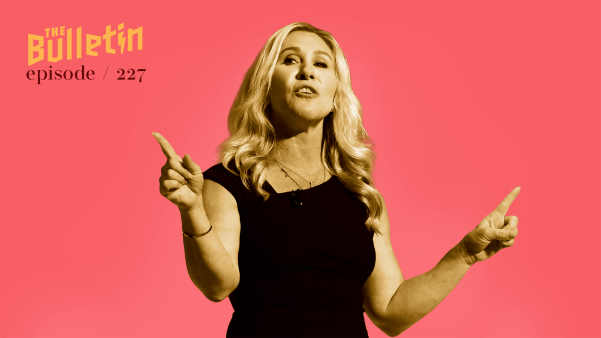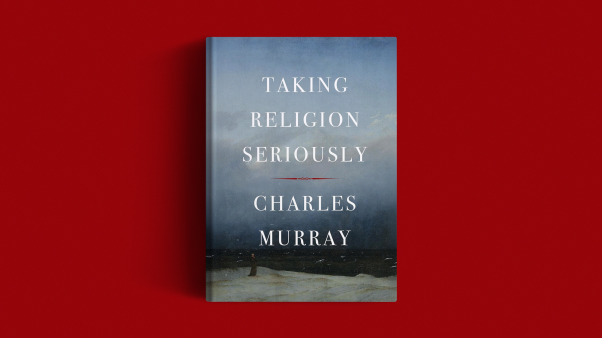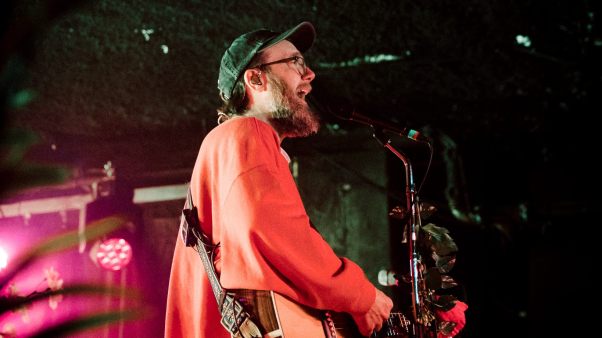Thomas Tweed is one of the most distinguished figures in the world of religious studies. His wide-ranging writings include key contributions in diasporic and immigrant religion, Catholic history, American Buddhism, and “lived” or everyday religion. Even that diversity does little to prepare us for the sheer scope of his triumphant new book, Religion in the Lands That Became America: A New History, which is destined to become a standard work for anyone interested in American religious history. It will be for this generation what Sydney Ahlstrom’s A Religious History of the American People (1972) was for the scholars, students, seminarians, and general readers of half a century ago and what Mark Noll’s A History of Christianity in the United States and Canada (1992) was for the next generation.
Grounded in contemporary concerns, Tweed’s book differs from many traditional models, so it requires a little explanation. At first sight, it offers a straightforward chronological structure. For example, a chapter on the period 1792–1848 addresses the broad theme of “Expansionist Religion: Expanding and Contracting Worlds in the Agrarian ‘Empire of Liberty.’” This is followed by the “Industrial Religion” era of 1848–1920, and so on.
This sort of presentation might appear in any general history, with a more or less familiar periodization. With a couple of arguable exceptions, Tweed’s account of religious development is exemplary. I am unconvinced that the “Countercultural Religion” he locates between 1964 and 1974 demands as much attention as he gives it, and I personally would attach just as much significance to the post-1975 decade. But generally, the structure makes wonderful sense.
Throughout, Tweed’s points are convincing and his writing accessible. His strength lies in describing religious places and sites and interpreting sensitively what they might have meant to the communities that created and used them. I cannot resist quoting his description of the New England meetinghouse as “a sort of Congregationalist kiva or Puritan council house.”
But if much of the book’s format seems conventional, it departs massively from older precedents in two crucial ways. One is the geographic scope indicated by the title Religion in the Lands That Became America, and second is the cultural and religious consequences of that perspective. That means paying full and respectful attention to Native societies, as well as to the Catholic imperial systems, chiefly the French and Spanish, that preceded the British and the Americans. The book also seeks to understand religion through the lens of sustainability, through how societies cope with the technological and climatic pressures that can prove so ruinous if not handled wisely. In both these innovative approaches, Tweed presents provocative and rewarding ideas.
Tweed is deliberately seeking to escape a once-familiar model by which histories of American religion began by describing conditions in the British seaboard colonies (Puritan New England, Quaker Pennsylvania, the Anglican Chesapeake and South) and then traced the expansion of that religious order through progressive stages of conquest and settlement. His book is a history of religion, not just of American Christianity and assuredly not of American expressions of Protestantism as they originated in Northern and Western Europe.
To offer an admittedly crude gauge of just how radically Tweed’s book differs from its predecessors, it has no reference to Massachusetts until page 119 in a work of 370 pages of text! Plymouth and the Puritans make their entrance around the same point, roughly a third of the way through the story as he recounts it. He devotes considerably less space to the Protestant Great Awakening of the 18th century than to the Indigenous worlds of the Ancestral Puebloans (whom we used to call the “Anasazi”).
We might illustrate older models of telling that story—the versions he wishes to challenge—if we imagine the kind of continental map we might see in a television documentary, which begins with the scene in impenetrable darkness. Light then rises in the east, spreading gradually to bring new regions into view. In that vision, Ohio, for example, really did not exist until the arrival of the first British and Irish Protestants in the mid- and late-18th century, and certainly it had no separate religious history to speak of. On our imagined documentary map, it lies deep in the heart of darkness. The Rockies and the Pacific Northwest flash briefly into authentic existence as Lewis and Clark visit them, then the regions resume spiritual night.
If we take the whole subcontinental landscape that would ultimately become part of the Lower 48 states, such visions are absurd. In reality, Ohio was densely settled by Indigenous peoples for perhaps 400 generations by the time the first White settlers arrived. From approximately the first century AD, the region became home to sophisticated cultures who built cities and fortresses and whose rich spiritual life manifested abundantly in sacred art and architecture. The same was true of the ancient Puebloans.
Allowing for local circumstances and variations, we could make a similar statement for virtually every part of the subcontinent, which in spiritual terms was in no sense a wasteland awaiting the arrival of new truths from Boston and Philadelphia. Moreover, a generation of scholarship has established just how slow the Euro-American settlers were to dispossess these older spiritual and social orders, usually long after official maps claimed a territory for the emerging United States.
In retrospect, those maps should be seen as aspirational if not delusional. Often, the European presence in such communities was marginal and transitory, and matters went on much as they always had. Whatever the nation’s leaders might have desired, the United States remained a floridly diverse religious landscape through much of the 19th century, with active Indigenous practices operating in far more of the territory than anyone cared to admit. And that comment takes no account of the extensive survival of African spiritual traditions.
Older books might have included a token introductory chapter on Native American spiritualities before reaching the coming of Protestantism. Tweed, in contrast, devotes two of his ten chapters to detailed accounts of Native worlds, beginning with the foraging societies we first see in the archaeological record. He symbolizes this era through the remains of (presumably) a shaman who lived some 11,000 years ago in central Texas, where he was buried in Horn Shelter. Chapter 2 offers a loving portrait of the “Farming Religion” of the sedentary and (often) urban worlds during what Europeans might call the Middle Ages, the years between 1100 BC and AD 1492. We don’t conventionally talk about “medieval America,” but perhaps we should. Looking at the settlements of the Southwest and the Mississippi Valley, the language of cities and castles—and maybe also of cathedrals and pilgrim shrines—is hard to avoid.
To differing degrees, each of the following chapters pays full attention to the Indigenous backdrop to the religious and cultural thought of the rising European societies. At every stage, Anglo-Native relations revolved around religious issues and competing spiritual views. Native societies were dominated by spiritual leaders, and no effective distinctions demarcated the world of religion from that of diplomacy or warfare. Similar remarks apply to the Virginian Christians, whose attitudes to their new lands were shaped by ideas of providential guidance and the struggle against pagan evils. Repeatedly, the Native leaders who most effectively challenged white expansion claimed special prophetic or charismatic guidance. “Indian wars” were commonly religious wars in all but name.
From the 17th century through the 19th, white Americans formed their ideologies of empire through their successive encounters with Native peoples, whether peaceful or military, and religious themes dominated throughout. Visions of divinely sponsored conquest gave rise to theories of manifest destiny, while missionary rhetoric justified the imposition of Christianity upon subject peoples.
If Tweed’s focus on Native realities requires little justification, his guiding motif of sustainability requires some exposition. He describes how, through the centuries, the societies in “the lands that became America” all faced intense challenges that threatened to destroy them. In some cases, religion encouraged people to confront these dangers and to survive, while in others, that same force subverted societies and contributed to ruin.
In successive eras, those challenges included dangers from climate change, as well as the issues arising from African slavery and the subsequent legacy of injustice and exploitation. In more modern times, an industrial crisis led to mass urbanization, with its consequences of social conflict and gaping inequality, together with grave damage to the environment. For Tweed, these cumulative crises remain unresolved and in need of urgent action. Each, he suggests, should properly form the agendas of religious institutions in the modern world.
We do not have to accept every aspect of that structure to find it useful as an interpretive tool. Nor, of course, do we have to agree precisely with the space Tweed allocates to different religious and ethnic traditions. No one book can begin to cover every part of the vast story the author addresses here. I will put this volume on my bookshelf alongside those by Sydney Ahlstrom and Mark Noll but will assuredly not displace those classics. Even with those mild caveats, I really cannot recommend too strongly Religion in the Lands That Became America. It is a splendid achievement.
Philip Jenkins is a distinguished professor in Baylor University’s Institute for Studies of Religion. His most recent book is Kingdoms of This World: How Empires Have Made and Remade Religions.














